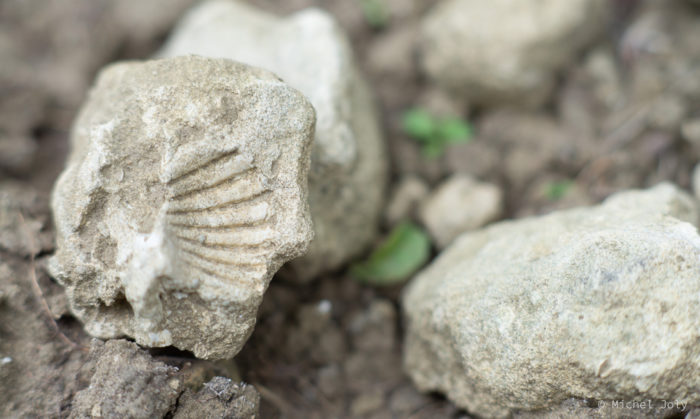Nailing the Myth of Minerality

This is an original post by Vicki Denig for Wine Searcher.
Despite being dismissed as myth by scientists, somms and winemakers still insist minerality is a thing.
By Vicki Denig | Posted Thursday, 09-May-2019
Minerality is perhaps the wine industry’s most overused, underwhelming, and misunderstood descriptors of them all.
Though when it comes to the legitimacy of the term, the question still stands: does minerality in wine actually exist, or is it a simple cop-out used to fluff lackluster tasting notes? Geologists, viticulturists, and industry professionals across the United States have a lot to say – and the verdict is in.
Santa Barbara-based geologist Brenna Quigley believes that minerality is a difficult, and at times controversial subject, because there isn’t a precisely established definition of the term. “For example, ‘mineral’ is a widely used aromatic descriptor referring to the aroma of ‘crushed rocks’ or wet stone, but it is also used as a textural descriptor for a hard, stony sensation on the palate,” she explains. Quigley notes that “mineral-driven” aromatics and textures aren’t the same thing, and that reductive components within a wine, which can give off flinty or rubbery aromas, can complicate things even further.
“The science is quite clear that the vine is not literally picking up minerals from the soil and transferring them into the wine,” she explains, adding that this does not mean that experiences that tasters may have and describe as minerality do not exist. Dr Kevin Pogue, professor of geology at Whitman College, echoes this, with a firmer standpoint against the use of the term, confirming that so-called “minerality” is not the direct result of minerals being taken up by roots. Pogue explains that vine roots don’t actually absorb minerals, which are complex chemical compounds; rather, vines absorb positively charged elements, such as nitrogen, calcium, and iron, which are often called “mineral nutrients”, as they are derived from the weathering of minerals, but are not actually minerals in themselves.
For Pogue, the flavors and aromas in wines that are described as minerality are more associated with white wines, due to their higher acidity, less prominent oak use, and production from lesser ripened grapes. “The only way that soil could contribute to this is if in some way, it contributed to making the grapes less ripe, which it can, through effects on water uptake, etc,” he says. “There is no direct transfer of rocks (e.g. limestone) or minerals (e.g. calcite) into wines via the soil in which the vines are grown.” Pogue states that most rocks and minerals have no taste, leading him to question how one could even believe to taste them in wine. Ultimately, the flinty, chalky, earthy, and briney notes often associated with minerality don’t come from rocks and minerals, but rather fruit condition and oak program.
Alex Maltman, author of Vineyards, Rocks, and Soils, agrees. “Minerality appears to be a convenient term for expressing a particular taste perception,” he says, noting that it’s entirely unclear as to what may be prompting said sensation. “The term sounds soil-related, but it is just an arbitrary label; any connection with the soil must be highly indirect, just as with the other tastes of wine.”
However, although hard to describe, Walla Walla-based viticulturist Sadie Drury supports the contrary. “I think minerality is terroir-driven, encompassing all the growing elements in a site, not just soil,” she says, pointing out that minerality can also vary from vintage to vintage. “The vineyards with less topsoil and more fractured basalt near the surface are also the windiest and most naturally stressed sites,” she explains, which causes clusters to be less fruit-forward. For Drury, minerality is best described as subtle nuances that take her back to the places where wines were grown. “When I find minerality in a wine that I haven’t grown, it really inspires me to think about the vineyard and what the growing conditions must be like there.”
Alex Sokol Blosser, winemaker and co-president of Sokol Blosser Winery in Willamette Valley, takes the subject beyond science, adding a philosophical level to the discussion.
“I remember reading in some wine journal that minerality actually does not exist or that we can’t taste it; that does not deter me even if that might be scientifically true,” he explains. Sokol Blosser does however concur with Pogue’s initial point, highlighting that the combination of fruit mixed with good acidity, as well as fermentation vessel (for him, it’s concrete) may give an appearance of flavors of minerality. “I would offer that it does not matter where the minerality comes from [be it] dirt, fermenter, winemaking. As long as you taste it, then it’s there,” he says. “There are things I can do to show more fruit in my Pinot Noir (whole-cluster ferments), or showcase more butter in a Chardonnay (rack right after MLF), or show more barrel impact (stronger toasts and higher percentage of new oak). How can I get hints of minerality? By making sure there is plenty of acid in the [fruit] by not picking too late and growing the grapes in a site where the vines have to struggle in a bit.”
Paul Wasserman, West Coast sales manager for Becky Wasserman & Co, goes even further with Sokol Blosser’s point, stating that minerality undoubtedly exists. “There is too much empirical tasting evidence to dismiss it. We have no scientific proof of it – so what?” he says, comparing the concept of minerality to the likes of other scientific theories that have been recently proven. For Wasserman, minerality is the manifestation of elements of terroir that feel like stone and soil in the texture of wine. “The emphasis on texture is important,” he emphasizes, “Minerality is something one feels rather than smells or tastes.”
Wasserman notes that there are certain types of soil or bedrock that one can indeed smell and taste, particularly iron-rich clay soils. “They make wine savory, even bloody,” he says, additionally calling out north-facing white clay or marl terroirs, noting that these soils/bedrocks showcase blue fruit flavors over black fruit notes. “For the most part, minerality manifests itself through texture, and therefore in shapes, more than it does in flavors or aromas,” he explains. Rather than the ‘fruit-salad language’ generally associated with wine, Wasserman notes that descriptors linked with minerality are often geometric: round, linear, or dense, as well as gritty, chalky, or gravelly, to name a few. “[Minerality’s] genesis is in soil and bedrock,” he explains, which is then conveyed by the vine, farmer, and winemaker, in addition to being tempered by climate. For Wasserman, wine’s softer envelope is its fruity components, but at its firmer core and structure, there’s minerality, along with tannins and acidity.
“The qualities of terroir-driven wines – the wines that best express minerality – are mostly noticeable once they have been ingested, not while they are still in your mouth,” he says, re-emphasizing texture as its most imperative component. “As soon as you have swallowed or spit wine, there will be a pressure on the back of your palate or on your tongue. This pressure has an intensity, a length, and a texture. If you are not used to put your entire focus on that moment, you are most likely unaware of minerality.” Wasserman likens wine tasting to taking a series of measurements, with the eyes, nose, and mouth being the tools. “If you understand and like minerality, the last measurement in the chronology of tasting is the most important.”
Pascaline Lepeltier MS, sommelier and managing partner at New York’s Racines, also believes that minerality exists, although difficult to explain. For her, the concept has become simplified with overuse – and to its detriment. “I believe that a certain minerality exists – a transformation of the inorganic by the microbial and fungal organic [components], thus transformed into organic and restored in the fruit,” she says. Lepeltier defers to the “magic alchemy of fermentation”, stating that little by little, this is where the inorganic state begins to return. “Many things are unfortunately confused in tasting, including aromatics from natural or added sulfur compounds, and structural elements from additions in winemaking.” For her, the solution lies in making sure that industry professionals be more rigorous and exacting tasters.
Quigley sums it up best. “It is difficult to discern whether or not minerality is conveyed through soil, if we don’t yet agree on exactly what we are talking about,” she says, noting that she, like Wasserman, experiences terroir through texture, and therefore does believe that a certain form of textural minerality is indeed conveyed through soil/bedrock.
However, Quigley admits that she tends to shy away from using the term, simply because the vague understanding of the topic can distract from the discussion of a wine itself. “In reality, minerality in wine is likely a much more complicated series of pathways and relationships between the physical and chemical environment of the soil, the vine’s physiology, and the winemaking.”
Denig, Vicki. “Nailing the Myth of Minerality”. Wine News, Wine Searcher. May 9, 2019, www.wine-searcher.com/m/2019/05/nailing-the-myth-of-minerality.
